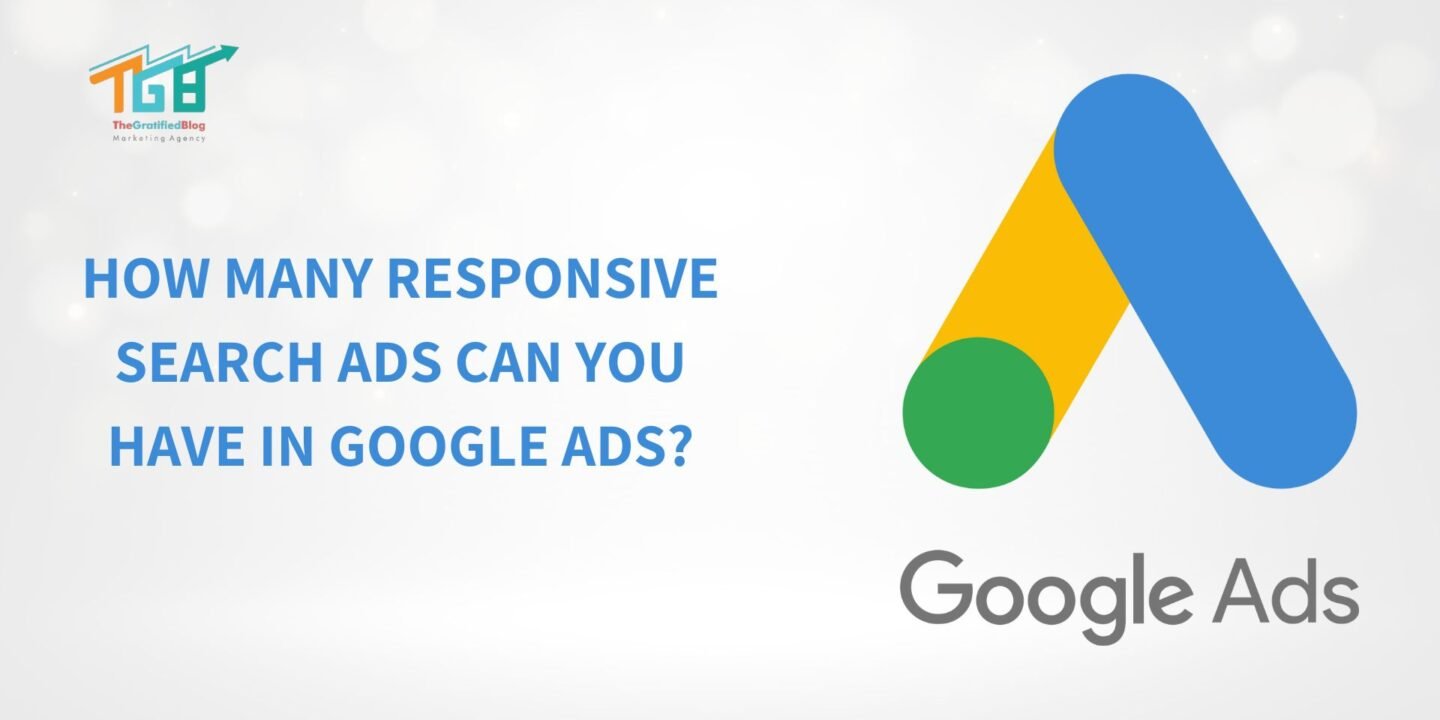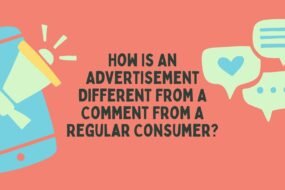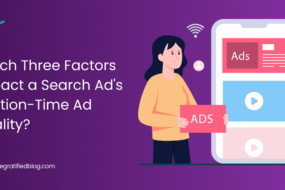
When you start running campaigns on Google Ads, you might hear the term “Responsive Search Ads” (RSAs) thrown around. These ads are a fantastic way to reach your audience more effectively, but a common question that comes up is, “How many responsive search ads can you have in Google Ads?”
In this blog, we will break down this question and explore everything you need to know about RSAs, including how many you can have, why they matter, and how you can make the most out of them for your campaigns.
Let’s dive in!
What Are Responsive Search Ads?
Before we get into the specifics of how many you can have, let’s first understand what responsive search ads are. Responsive Search Ads are a type of Google ad that automatically adjust to show the best combination of headlines and descriptions based on what is most likely to attract clicks.
Unlike standard text ads, which have fixed headlines and descriptions, RSAs allow you to provide multiple variations of headlines and descriptions. Google then tests different combinations of these variations to find the best-performing combination. The idea is that by showing more relevant combinations, you will have a higher chance of engaging potential customers.
For example, if you provide five different headlines and four descriptions, Google Ads will automatically generate 15 unique ad combinations. This flexibility helps Google optimize your ads and deliver the best possible results based on what users are searching for.
How Many Responsive Search Ads Can You Have in a Campaign?
Now that we know what responsive search ads are, let’s get to the core of your question: How many responsive search ads can you have in a campaign?
The Answer: You can have up to 3 (Three) responsive search ads in a single ad group. Google recommends starting with at least 3 RSAs for every ad group in your campaign. This allows Google to test different combinations of your headlines and descriptions and optimize them based on performance.
Google will then serve the best combination based on the search query, making sure your ad is as relevant as possible to the person seeing it. If you only have one RSA, you miss out on this flexibility.
Why 3 Responsive Search Ads?
At first glance, you might think that you could just create as many RSAs as you want to get the best results. But Google limits the number of RSAs to three per ad group. This limitation exists for several reasons:
- Optimization: Having multiple RSAs allows Google’s algorithms to test different combinations and find the one that works best. If you were to have more than three, it could overwhelm the system and make optimization harder.
- Ad Relevance: Google wants to make sure the ads are relevant. With too many variations, it could dilute the quality and relevance of each ad. Keeping it to three helps maintain high relevance.
- Performance Testing: Google’s system tests combinations of headlines and descriptions to see which ones work best. If you had too many, it would be harder to assess the true performance of each one.
So, while it may seem tempting to throw in tons of headlines and descriptions, sticking to Google’s recommendation of three is your best bet for success.
How Many Variations Should You Use in a Responsive Search Ad?
Now that we know how many RSAs you can have, let’s talk about how many variations you should include in each ad. You can add up to 15 different headlines and 4 different descriptions to a responsive search ad.
But just because you can add this many doesn’t mean you should go all out and add the maximum. The key is to strike a balance between providing variety for Google’s algorithms to test while also keeping your message clear and concise.
Here’s a simple approach to get started:
- Headlines: Aim for a mix of different types of headlines. For example, you can include:
- Brand names
- Product features
- Emotional appeals (e.g., “Save Big Today”)
- Call-to-action phrases (e.g., “Shop Now”)
- Descriptions: Keep your descriptions clear and focused on the benefits of your product or service. Include strong calls to action and try to explain why someone should click on your ad.
Remember, you do not have to fill every slot with a different variation. Even though you can add up to 15 headlines and 4 descriptions, Google’s system will optimize the best-performing combinations, so it’s okay if you do not use all of the available options.
What Are the Best Practices for Creating Responsive Search Ads?
While knowing the limits and possibilities for RSAs is helpful, it’s equally important to understand how to create ads that are optimized for performance. Here are a few tips to help you get the most out of your RSAs:
1. Use Varied and Relevant Headlines
As mentioned earlier, the goal is to create ads that will appeal to different search queries. So, your headlines should cover a variety of angles. Include your target keywords, but also think about the emotional aspect of your audience. What will grab their attention?
- Example: If you’re selling shoes, your headlines could include:
- “Shop Stylish Shoes”
- “Best Running Shoes for Comfort”
- “Discounts on Premium Sneakers”
2. Include Strong Call-to-Actions (CTAs)
You should always have a clear call to action in your ads. Tell users exactly what you want them to do next. Phrases like “Shop Now,” “Get Started,” or “Learn More” can encourage clicks.
3. Focus on Benefits, Not Just Features
While it’s important to list the features of your product, focusing on the benefits can often lead to better results. Instead of just saying, “Durable Shoes,” try something like, “Comfortable Shoes for All-Day Wear.”
4. Be Specific and Use Numbers
Whenever possible, include specific details in your headlines and descriptions. Numbers can help your ad stand out, especially in competitive industries. For example, “Save 50% on Summer Collection” is much more compelling than “Save Money on Shoes.”
5. Test and Learn
Google’s system will automatically test the combinations, but it’s important to keep an eye on your ad performance. Regularly check how your ads are performing and make adjustments as needed. Sometimes, certain combinations will outperform others, and it’s important to optimize based on this data.
What Happens If You Have More Than 3 RSAs in an Ad Group?
While Google allows up to 3 responsive search ads per ad group, you might be wondering, “What happens if I add more than that?”
Here’s the thing: If you try to add more than 3 RSAs in an ad group, Google will warn you. It’s not that Google will stop you from adding more, but it simply won’t give you the best results because the system will struggle to properly optimize the combinations.
Additionally, having too many ads can lead to confusion in performance tracking. It could make it more difficult for you to identify which headlines or descriptions are working best.
Can You Have Multiple RSAs Across Multiple Ad Groups?
Absolutely! While Google limits you to three RSAs per ad group, you can create multiple ad groups within a campaign, each with its own set of responsive search ads. This allows you to cover a broader range of keywords and customer intents.
For instance, if you are selling shoes, you could create one ad group for “running shoes,” another for “dress shoes,” and another for “casual shoes.” Each of these ad groups could have three RSAs tailored to that specific type of shoe.
This strategy can help you target different audience segments and improve your campaign’s overall performance.
What Are the Benefits of Using Responsive Search Ads?
Responsive Search Ads offer several advantages over traditional text ads, making them an essential tool in your Google Ads strategy. Here are a few key benefits:
- Increased Flexibility: RSAs allow you to show different combinations of headlines and descriptions. This flexibility helps ensure your ads are as relevant as possible to each search.
- Improved Performance: Since Google automatically tests different combinations, RSAs are more likely to perform better than static text ads. Over time, the system will optimize your ads to show the best-performing versions.
- Better Reach: With RSAs, you can create more relevant ads for a wide variety of search queries, helping you reach a larger audience.
- Time Savings: Instead of manually testing different ad combinations, Google handles it for you. Once you’ve added your headlines and descriptions, you can sit back and let the system work its magic.
Frequently Asked Questions
Q1. How Many Responsive Search Ads Can You Have in Google Ads?
Ans. You can have up to 3 (three) responsive search ads per ad group in Google Ads. However, it’s recommended to focus on one high-performing ad to optimize results.
Q2. How many responsive surcharges do Google Ads allow?
Ans. Google Ads does not impose surcharges for responsive search ads. They are included in your existing ad spend without extra charges.
Q3. How do I optimize responsive search ads?
Ans. To optimize responsive search ads, use diverse headlines and descriptions, focus on relevant keywords, pin critical content, analyze performance data, and continuously refine underperforming elements.
Q4. How many Google Ads can you run at once?
Ans. There’s no set limit to the total number of ads you can run, but each campaign and ad group has specific limitations. Focus on quality over quantity for better performance.
Conclusion
Responsive Search Ads are a powerful tool in Google Ads, and knowing how many you can have is just the start. With the ability to have up to three RSAs per ad group, you can give Google enough flexibility to find the best combinations for your campaigns. Just remember to include varied and relevant headlines, clear calls to action, and benefits-oriented descriptions.
By following the best practices and understanding the limits, you can create more effective ads that reach your audience, improve your performance, and save you time.
Happy advertising!








No Comments